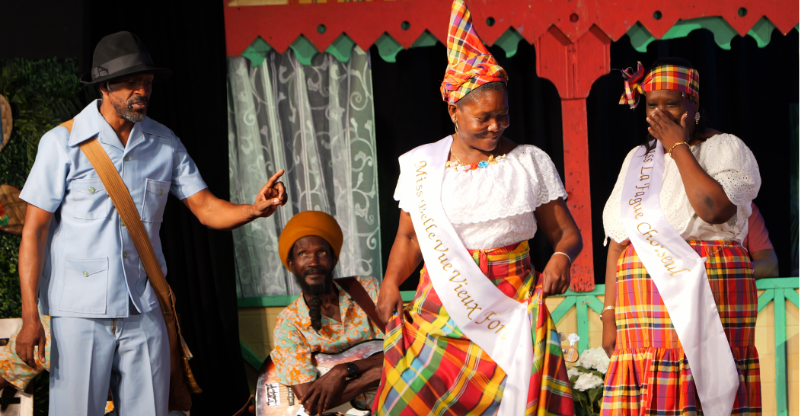The concept of geographical authenticity in cultural products has gained global recognition, with examples like tequila from Mexico, champagne from France, and now Kente cloth from Ghana. In October, Ghana’s Geographical Indications Act officially classified Kente cloth as a product of specific regions like Agotime and Adanwomase, safeguarding its authenticity and value. This development has sparked a broader conversation about cultural identity and authenticity in fashion, particularly in Saint Lucia, where national and Creole wear reflect a complex history of cultural blending. Across the Caribbean and the Americas, fabrics and garments often serve as cultural emblems, tracing their origins to centuries of interwoven identities. In Saint Lucia, Madras—a colorful, checkered fabric originating from Chennai, India—has become dominant, though floral cotton prints were once the fabric of choice. Designer and cultural advocate Sean Greaves notes that floral material was historically associated with the Wòb Dwiyèt, worn by the less affluent, while French brocade, imported from French Guiana, signified wealth. Madras, initially used for hair ties, gradually became central to Saint Lucian attire. The evolution of national costumes in the French Caribbean, including the douillette and chemise-jupe, reflects a blend of African, Asian, East Indian, European, and Indigenous American influences. Saint Lucia inherited these styles, with the chemise-jupe evolving into the Madras-based national dress. Greaves attributes the shift to Madras’s accessibility, as most fabrics are imported from Trinidad and Tobago. Unlike Ghana’s Kente, which remains rooted in its origin, Saint Lucia’s national wear embodies a layered history shaped by the transatlantic slave trade and indentured labor. Entrepreneur Anselm Mathurin’s Calabash Wear print, showcased at New York Fashion Week, highlights the ongoing quest for a distinctly Saint Lucian identity. The question remains: Is authenticity about origin, or the reinvention of historical legacies?
标签: Saint Lucia
圣卢西亚
-

Where AI meets music: Saint Lucian creatives weigh promise, risks, law
Artificial intelligence (AI) is revolutionizing the music industry, from composition to marketing, but in Saint Lucia, the response is a mix of enthusiasm and caution. Local voices, including a tech consultant, a hitmaker, and a reggae artist, share their perspectives on this transformative technology. While AI offers efficiency and cost savings, it also raises complex questions about ownership, creativity, and cultural authenticity. Critics fear AI-generated music and cloned voices could dilute artistry and undermine copyright, while proponents view it as the next evolutionary step in music. Jim Joseph, a tech consultant, likens the current skepticism to past technological shifts, such as the transition from live bands to synthesizers. He predicts gradual acceptance but warns of unresolved legal issues, particularly around copyright and fair use. Award-winning musician Sherwinn Dupes Brice describes the duality of excitement and fear, emphasizing the need for artists to adapt and elevate their creativity. He stresses the importance of marketing and calls for updated copyright laws to address AI cloning. Reggae artist Werner Semi Francis sees AI as a supplementary tool, advocating for a hybrid approach that blends AI with human creativity. He believes success still hinges on song quality and business acumen. Joseph highlights the lag in copyright laws, noting that fully AI-generated content may not qualify for protection. He advises creators to scrutinize platform terms to avoid unintended reuse of their work. Brice and Francis both emphasize the need for legal clarity and cultural preservation, urging artists to maintain authenticity while leveraging AI. As regional experiments, like Trinidad and Tobago’s AI soca artist JOU VAY, emerge, questions about voice ownership and royalty distribution grow more pressing. The consensus among Saint Lucian artists is clear: embrace AI’s efficiency, navigate legal complexities, and preserve the human essence of music.
-

Shanice Francis: Stitching Saint Lucia into global fashion
Culture, though challenging to articulate in words, finds profound expression through actions. In Saint Lucia, one of the most compelling cultural manifestations is the tradition of wearing Madras fabric. This vibrant textile, with its origins in Madras (now Chennai), India, arrived in the Caribbean through colonial trade routes. Initially a lightweight cotton material, Madras became a symbol of resilience and identity for enslaved Africans in Saint Lucia. While they were often compelled to wear estate livery, they embraced Madras garments during feast days and special occasions as a form of self-expression and dignity.
Over time, Madras became integral to Creole fashion, particularly in the Wob Dwiyet, a traditional four-piece costume for women. Today, it stands as a national emblem, especially during Creole Month celebrations. Shanice Francis, known as Gruntage Baby, is a Saint Lucian fashion designer and owner of Gruntage Studios, who has been instrumental in preserving and redefining this cultural heritage. Living in the diaspora, Francis uses Madras to connect with her roots and celebrate her heritage through her innovative designs.
Francis emphasizes the importance of evolving traditional Madras designs to make them accessible to a broader audience. She envisions leveraging Saint Lucia’s tourism industry to promote Madras globally, suggesting its incorporation into resort staff uniforms. She also advocates for better access to resources for local creatives to thrive and scale their productions. Francis’s advice to young designers is to infuse their work with the spirit of Saint Lucia, sharing the stories behind the art and collaborating globally while retaining their unique cultural voice.
-
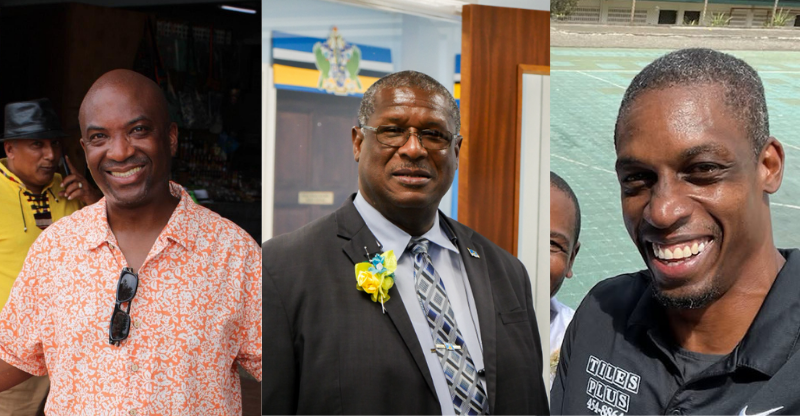
King, Fevrier, Stiede: Three-way race for Castries North
The upcoming general election in Saint Lucia is shaping up to be a historic event, with Castries North emerging as the focal point of national attention. This constituency, once a stronghold of the United Workers Party (UWP), is now a battleground for three formidable candidates: the seasoned incumbent Stephenson King, UWP’s rising star Stephen Fevrier, and independent newcomer Marcellus Stiede. The race is emblematic of a broader clash between experience, innovation, and grassroots leadership. Stephenson King, a political stalwart with a career spanning over four decades, has been a dominant figure in Castries North. However, his decision to leave the UWP in 2021 and run as an independent candidate marked a turning point in his career. Despite his long-standing influence, King now faces stiff competition from Fevrier, a globally experienced diplomat, and Stiede, a former professional basketball player turned community advocate. Fevrier, with his international background and vision for economic revitalization, promises to bring fresh perspectives to the constituency. Meanwhile, Stiede emphasizes youth development and transparency, critiquing the culture of political dependency. The election has sparked widespread debate, with voters weighing the merits of King’s legacy against the transformative potential of his challengers. As Saint Lucia prepares for this pivotal moment, Castries North stands as a microcosm of the nation’s political evolution, where tradition meets the promise of change.
-
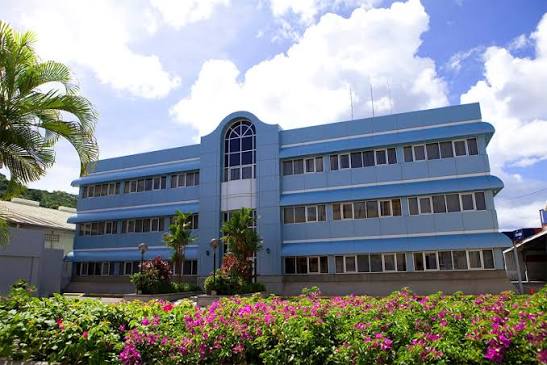
Multiple SLASPA employees charged in $705K drug bust
In a significant crackdown on drug trafficking, three employees of the Saint Lucia Air and Sea Ports Authority (SLASPA) have been arrested and charged following a major drug bust at Port Castries. The operation, conducted on October 17, 2025, was a joint effort by the Royal Saint Lucia Police Force (RSLPF) and the Customs and Excise Department, based on intelligence reports.
During the operation, authorities intercepted a grey van driven by Cyril Joseph, a Red Cap assigned to the port. A barrel in the vehicle, which had not been cleared for customs inspection, was found to contain cannabis, cannabis resin (hashish), and MDMA crystals (commonly known as ecstasy), with an estimated street value of $705,686.50.
Further investigations revealed a coordinated effort among several port employees to bypass customs procedures, leading to the arrest of two additional SLASPA workers, Ian Moncherry and Nadia Edward. A subsequent search of Moncherry’s residence uncovered an additional quantity of cannabis resin valued at $4,200.
All three individuals were charged on October 22, 2025, with offences including importation of a controlled drug, possession with intent to supply, aiding and abetting, and fraudulent evasion of customs duties and controls. They appeared before the First District Court on October 24 and were each granted bail in the sum of $45,000, either in cash or with a suitable surety.
The RSLPF emphasized that this operation highlights ongoing efforts to safeguard Saint Lucia’s borders and combat corruption within key institutions. A police statement declared, ‘This operation is a clear message that corruption and criminal collusion will not be tolerated,’ noting that illegal drugs and firearms entering through the island’s ports ‘directly fuel violent crime, gang activity, and homicides within our communities.’
-
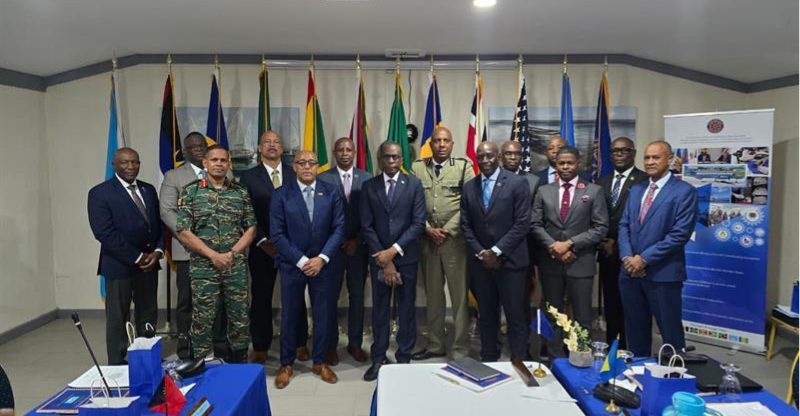
Regional security challenges discussed in Saint Lucia
The Regional Security System (RSS) remains a cornerstone in safeguarding the eastern Caribbean, particularly as regional tensions escalate due to the increased presence of US military forces. This sentiment was echoed by Saint Lucia’s Prime Minister, Philip J. Pierre, and Commissioner of Police, Verne Garde, during the recently concluded RSS Biannual Security Chiefs Meeting in Saint Lucia. Pierre, who also chairs the RSS, emphasized the organization’s critical role in addressing pressing challenges such as cybersecurity threats, organized crime, climate-induced instability, and gang violence. He underscored the importance of maintaining the Caribbean as a ‘Zone of Peace’ and highlighted the RSS’s indispensable contribution to regional safety, stability, and prosperity. Pierre reaffirmed Saint Lucia’s commitment to the RSS and advocated for enhanced collaboration with international partners, including the United Kingdom, Canada, the European Union, and the United States. He also expressed support for expanding the RSS’s reach within CARICOM to bolster regional resilience. Garde, meanwhile, emphasized the RSS’s role as a vital platform for coordination, resource sharing, and mutual support, particularly in tackling transnational crime, illegal trafficking, cyber threats, maritime vulnerabilities, and natural disasters. Brigadier Omar Khan, Chief of Defence Staff of the Guyana Defence Force, reiterated the importance of regional collaboration in ensuring Caribbean stability and security. The three-day meeting, which marked the RSS’s 43rd anniversary, brought together law enforcement and defense personnel from the eight RSS member states—Saint Lucia, Antigua and Barbuda, Barbados, Dominica, Grenada, Saint Kitts and Nevis, St. Vincent and the Grenadines, and Guyana—along with regional and international partners. Although not formally on the agenda, the meeting followed a recent CARICOM statement expressing concerns over the increased security buildup in the Caribbean and its potential impacts. CARICOM leaders reaffirmed their commitment to combating narco-trafficking and the illegal trade in small arms, while supporting the sovereignty and territorial integrity of regional nations.
-
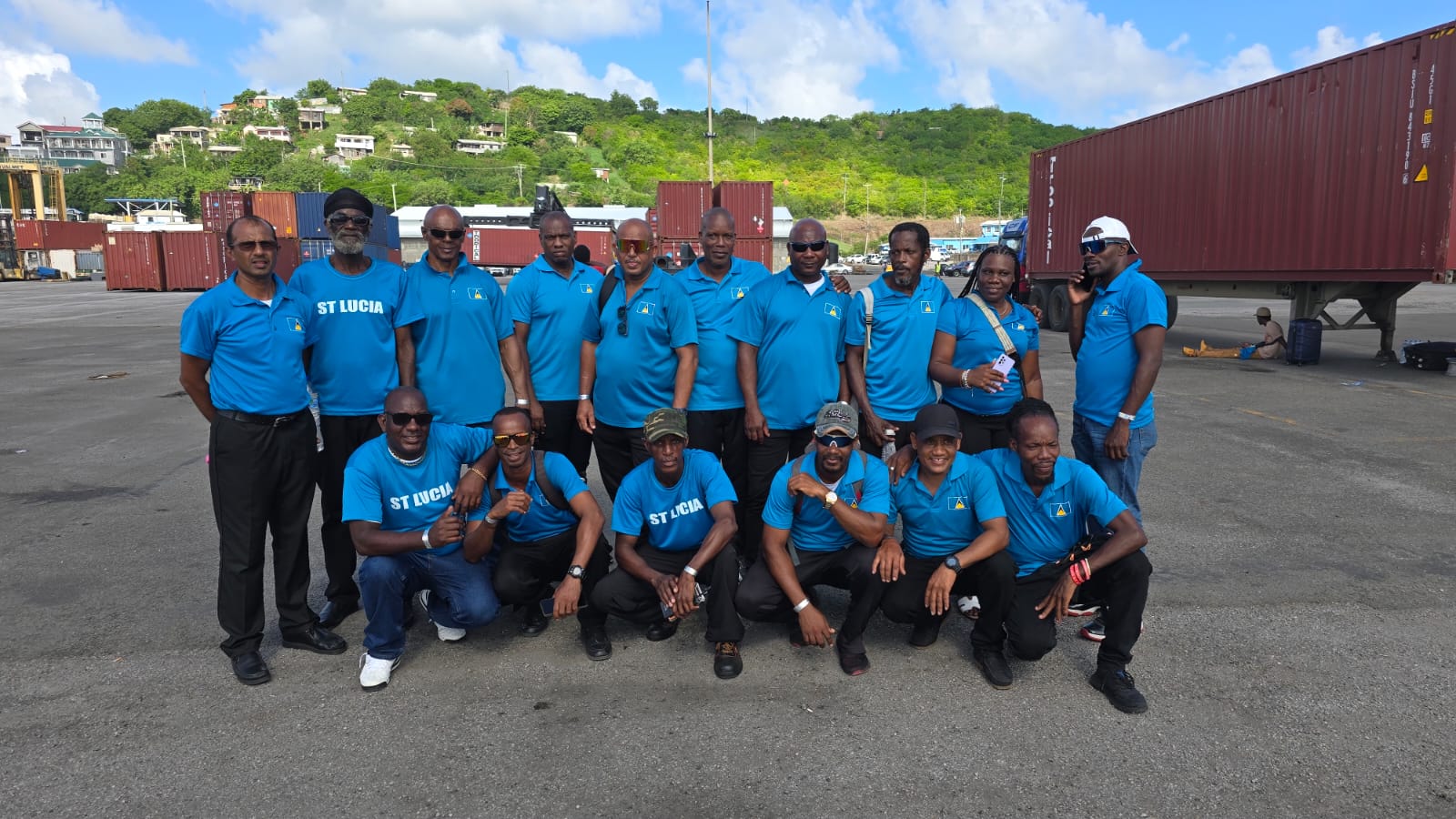
Local tapeball teams head to SVG for bilateral series
Saint Lucian tapeball cricketers are marking a significant milestone as they participate in their first-ever T20 tournament in St Vincent and the Grenadines, running from October 23 to 29, 2025. This groundbreaking event, organized through a partnership between the Saint Lucia National Tapeball Cricket Association and the St Vincent Tapeball Committee, features two teams from Saint Lucia: a youth squad and a veteran team. Each team is set to compete in at least four matches during the tournament. The initiative aims to elevate tapeball cricket’s profile across the Windward Islands and provide players with a platform to demonstrate their abilities on a larger stage. Travel and logistical support for the tour have been generously sponsored by Stephenson King, the parliamentary representative for Castries North. Cyrus Cepal, President of the Saint Lucia Tapeball Association, expressed pride in the teams’ participation, emphasizing the association’s commitment to fostering the sport’s growth. ‘We are dedicated to developing tapeball throughout the Windwards and creating opportunities for both youth and veteran players to showcase their talents,’ Cepal stated. He also highlighted the broader mission of promoting sports as a means of health, community engagement, and lifelong activity. The tournament not only serves as a competitive platform but also as a cultural exchange, strengthening ties between the islands. The full squads for both the youth and veteran teams have been announced, featuring a mix of emerging talents and seasoned players, all eager to make their mark in this historic event.
-
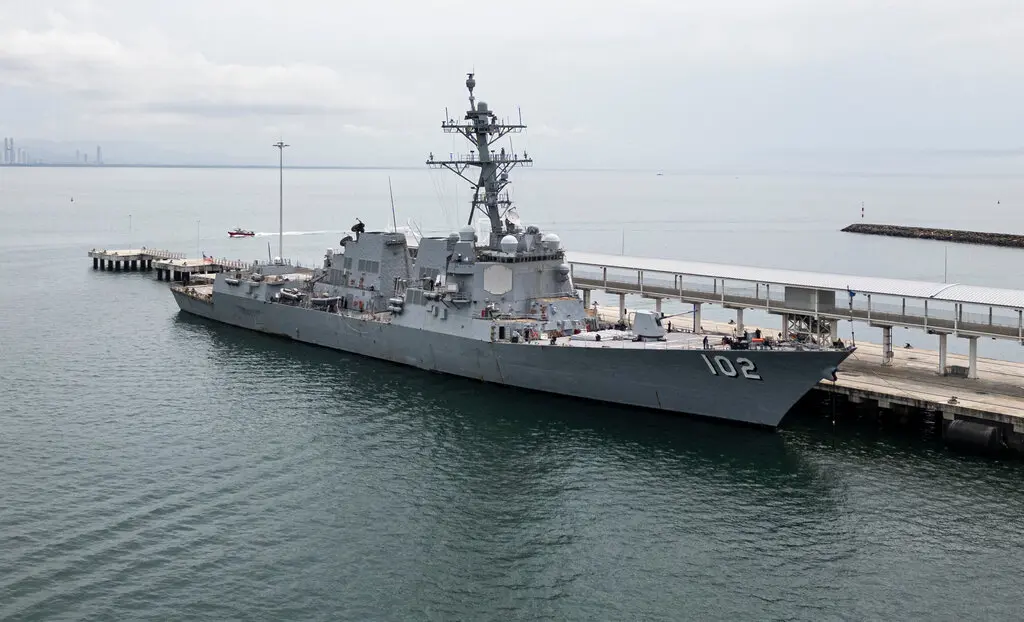
US continues its show of force in the region
In a significant escalation of its counternarcotics operations, the United States conducted a nighttime strike on an alleged drug vessel in Caribbean territorial waters, resulting in the deaths of six suspected ‘narco-terrorists.’ This marks the ninth such operation in recent weeks, with reports indicating that two Trinidadians were among those killed. The strike, announced by US Defense Secretary Pete Hegseth on October 24, is part of a broader campaign initiated in September under President Donald Trump’s directive to combat drug trafficking in the region, particularly targeting Venezuela. The operation has seen the deployment of advanced US military assets, including guided-missile destroyers, F-35 fighter jets, a nuclear submarine, and thousands of troops. Trinidad and Tobago’s Prime Minister Kamla Persad Bissessar has publicly supported the campaign, while CARICOM has reiterated its commitment to maintaining the Caribbean as a ‘Zone of Peace,’ emphasizing dialogue and peaceful conflict resolution. A brief video released by the US military shows the vessel being struck by a projectile, though no evidence of its cargo was provided. Meanwhile, the US Navy continues to expand its presence in the region, with a versatile warship scheduled to arrive in Port of Spain for joint training with Trinidad and Tobago’s Defense Force. The newly established Counternarcotics Task Force, led by the US Marine Corps, underscores the Trump administration’s intensified focus on combating criminal networks in Latin America and the Caribbean.
-

Former Caribbean leaders call for US military pullback
A coalition of former Caribbean Community (CARICOM) Heads of Government has issued a joint statement urging a reduction in military escalation in the region, citing threats to peace, stability, and development. The signatories include prominent figures such as Kenny Anthony of Saint Lucia, Baldwin Spencer of Antigua and Barbuda, and Bruce Golding of Jamaica, among others. The statement highlights concerns over the increased presence of nuclear vessels and aircraft in the Caribbean, warning that such actions could drag the region into conflicts not of its making. The leaders specifically addressed the escalating tensions between the United States and Venezuela, with the US deploying naval assets and conducting military exercises in Caribbean waters, while Venezuela has mobilized forces along its coastline in response. The former leaders emphasized the importance of maintaining the Caribbean as a zone of peace, upholding national sovereignty, and resolving disputes through diplomacy rather than force. They also referenced past US requests to station military assets in the region, which Caribbean states have historically resisted. Trinidad and Tobago’s former Prime Minister Keith Rowley endorsed the statement, criticizing current regional actions that deviate from long-standing principles of unity and diplomacy. His stance contrasts with that of current Prime Minister Kamla Persad-Bissessar, who has supported US military deployments in the fight against drug cartels but denied formal involvement in operations against Venezuela.
-

Caribbean Export offers up to EUR€100 000 in co-financing for Saint Lucian SMEs
Saint Lucia has unveiled a groundbreaking co-financing initiative designed to empower small and medium-sized enterprises (SMEs) in their journey toward green transition and digital transformation. The Building Resilient Innovation for Digital & Green Enterprises (BRIDGE) programme, spearheaded by the Caribbean Export Development Agency (Caribbean Export) with backing from the European Union’s Global Gateway initiative, offers co-financing of up to €100,000 to eligible SMEs. This initiative aims to bolster innovation and resilience in the region’s business landscape. To ensure local businesses can capitalize on this opportunity, Caribbean Export will host a capacity-building session titled ‘Expanding Access to Finance’ on October 27 at Coco Palm, Rodney Bay, starting at 9:00 a.m. The session will feature interactive discussions, providing participants with practical insights into financial services and products tailored for micro, small, and medium enterprises (MSMEs). Attendees will explore diverse financing options, including commercial banking, credit unions, microfinance, equity financing, and grant opportunities. Additionally, a past grant beneficiary will share their experience, offering valuable perspectives on the application process and the transformative impact of funding. The event will also introduce the EU-funded BRIDGE Grant Facility, detailing its application process, eligibility criteria, and priority areas such as support for women and youth-led businesses, digital transformation, and green transition. Caribbean Export’s broader goal is to enhance SME competitiveness and export readiness across the region. The sessions will equip participants with essential skills for crafting effective grant proposals, covering topics such as the grant lifecycle, key components of successful applications, and practical writing techniques.
